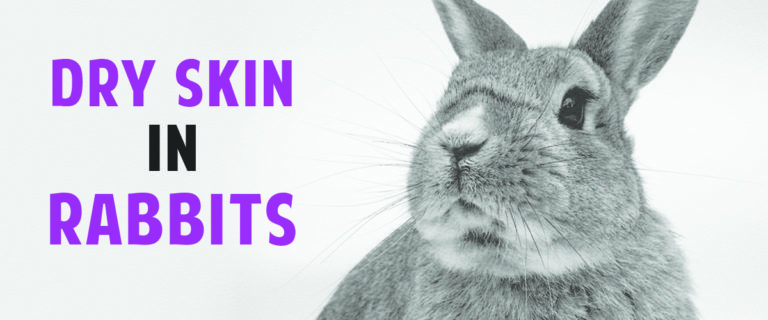It’s not unusual for rabbits to shed twice a year (need to switch up that coat to stay seasonally fashionable). But if dry skin comes along with the shedding, there may be something more going on. While normal shedding can result in patchy fur, flaky skin – especially when accompanied by itching – can hint at a problem.
Allergies and Irritants
Just like us, some rabbits are more sensitive than others. Changes in weather and humidity can throw a rabbit’s delicately balanced skin out of wack. Environmental allergies to litter, laundry detergents, and cleaning products or air fresheners aren’t uncommon either.
Shampoos and commercial skin products are some of the worst offenders. Remember, rabbits are self-cleaning animals and generally do a great job of keeping themselves dapper. Bathing is unnecessary and can cause health problems. Trapped moisture on a damp rabbit can irritate their naturally sensitive skin, for example. If a rabbit smells bad, the problem can usually be corrected with diet modifications, more frequent litter box changes, or a vet visit if necessary.
Parasites
The most common cause of “dandruff” and flaking along the back in rabbits is a mite infestation. Mange mites and fur mites can set up camp on a rabbit and cause itching, bald patches, dry skin, irritation, and even open lesions. Look closely at your rabbit’s skin. You’re not going crazy. Fur mites are also referred to as “walking dandruff” because they are commonly seen moving dead flakes of skin.
Be wary of over-the-counter treatments. A topical application of prescription medicine selamectin is a safe and effective way to kick creepy crawlies to the curb ASAP. Keep them away with human-grade Pestavert, made from nothing but organic, non-toxic ingredients.
Skin Problems
Mites may seem like the obvious answer to dry skin, but there are a host of other skin issues that can cause lookalike symptoms. Ringworm (technically a fungus), for example, can cause crusty/scaly skin. It usually first appears around the head. Be careful, it’s contagious!
When the skin’s carefully balanced flora is compromised, harmful bacteria can overgrow. Pseudomonas aeruginosa sometimes looks like blue discoloration of the fur. Treponema cuniculi, “rabbit syphilis,” is another possibility. More often, however, bacterial skin infections are a side effect of trapped moisture. Bald spots, crusty skin, and irritation can tip you off. The first step to treatment is to identify and eliminate the cause of excess moisture. A less-leaky water bottle or absorbent rabbit litter upgrade is an easy fix. Incontinence or drooling, on the other hand, calls for an exotic vet to fix the underlying problem.
Every rabbit’s “normal” is a little different, but sudden bout of dry skin shouldn’t be ignored. Regular brushing is a great way to bond with your rabbit and catch any changes in her skin right away.





